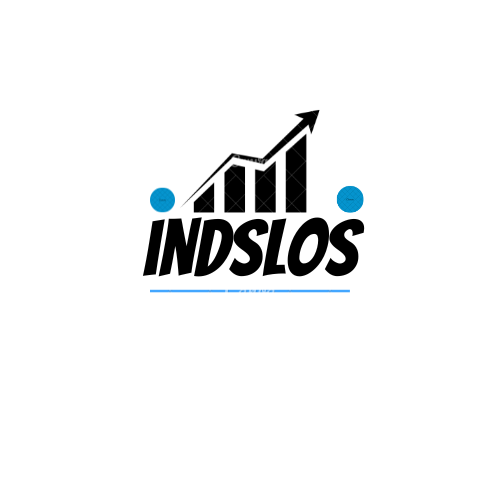In the ever-evolving landscape of the internet, writing a blog that not only captures the reader’s attention but also aligns with search engine algorithms is crucial. In this guide, we’ll delve into the intricacies of crafting a SEO-friendly blog that stands out in the vast digital space.
I. Introduction
A. Importance of SEO in Blogging
Blogging has become a cornerstone of online expression, but without effective SEO practices, your content might go unnoticed. Understanding the role of SEO in blogging is the first step to creating content that gets the visibility it deserves.
B. Definition of SEO-Friendly Blog
A SEO-friendly blog is one that is optimized for search engines, making it easier for users to find and engage with your content. It involves a combination of strategic techniques to enhance visibility and ranking on search engine results pages (SERPs).
II. Understanding SEO Basics
A. Keywords and Their Significance
Keywords are the building blocks of SEO. Learn how to conduct thorough keyword research and strategically incorporate them into your blog to attract the right audience.
B. On-Page SEO Strategies
Optimizing your on-page elements is crucial. Explore techniques like optimizing meta tags, headers, and URLs to signal search engines about your content.
C. Off-Page SEO Techniques
Beyond your website, off-page SEO involves building a reputable online presence. Discover effective strategies like link-building and social media engagement.
III. Crafting Compelling Content
A. Importance of Quality Content
While SEO is vital, content quality is paramount. Understand the symbiotic relationship between SEO and quality content, ensuring your blog resonates with readers.
B. Incorporating Relevant Keywords Naturally
Learn how to seamlessly weave keywords into your content, striking a balance between optimization and readability.
C. Formatting for Readability
Proper formatting not only improves user experience but also contributes to SEO. Explore tips on formatting your blog for easy consumption.
IV. Optimizing Images and Multimedia
A. Importance of Multimedia in Blogs
Visual elements enhance user engagement. Discover why images and multimedia are crucial for SEO and how to optimize them effectively.
B. Alt Text and Descriptions
Explore the significance of alt text and image descriptions and how they contribute to the overall SEO of your blog.
V. Utilizing Meta Tags Effectively
A. Title Tags
Crafting compelling title tags is an art. Learn how to create titles that grab attention and contribute to your blog’s SEO.
B. Meta Descriptions
Explore the importance of meta descriptions and how to use them to provide a concise summary that entices readers and search engines.
VI. Mobile Optimization
A. The Rise of Mobile Users
With an increasing number of users accessing content on mobile devices, optimizing your blog for mobile is non-negotiable.
B. Importance of Responsive Design
Discover the significance of responsive design and how it impacts your blog’s visibility on mobile devices.
VII. Social Media Integration
A. Shareability and Engagement
Social media is a powerful tool for expanding your blog’s reach. Learn how to integrate your blog with social platforms for increased visibility.
B. Linking Social Media Profiles
Establishing a cohesive online presence involves linking your blog with your social media profiles. Explore strategies for effective integration.
VIII. Building Quality Backlinks
A. Importance of Backlinks
Backlinks are like endorsements for your content. Learn the art of building quality backlinks and enhancing your blog’s authority.
B. Strategies for Acquiring Quality Backlinks
Explore ethical and effective strategies for acquiring backlinks from reputable sources, boosting your blog’s credibility.
IX. Regularly Updating Content
A. Freshness as an SEO Factor
Search engines value fresh content. Understand the importance of regularly updating your blog to maintain relevance.
B. Strategies for Regular Updates
Discover practical strategies for consistently updating your content without compromising quality, keeping both readers and search engines satisfied.
X. Monitoring and Analytics
A. Importance of Analytics
Utilize analytics tools to track your blog’s performance. Understand key metrics and how to interpret them for continuous improvement.
B. Tools for SEO Monitoring
Explore a variety of SEO monitoring tools that can help you stay on top of your blog’s performance and make informed decisions.
XI. SEO-Friendly Blogging Platforms
A. Overview of Popular Platforms
Different blogging platforms offer varying degrees of SEO-friendliness. Evaluate popular platforms and choose the one that aligns with your SEO goals.
B. Selecting the Right Platform for SEO
Explore factors to consider when selecting a blogging platform that caters to your SEO needs, ensuring optimal visibility.
XII. Avoiding Common SEO Mistakes
A. Keyword Stuffing
One common pitfall is keyword stuffing, which can harm your blog’s ranking. Learn how to avoid this mistake and maintain a natural flow.
B. Ignoring Mobile Optimization
Overlooking mobile optimization can lead to a significant loss of audience. Understand common mobile optimization mistakes and how to avoid them.
XIII. Staying Informed About Algorithm Changes
A. The Dynamic Nature of Search Algorithms
Search algorithms evolve. Stay informed about updates and adapt your SEO strategies to remain in sync with the ever-changing digital landscape.
B. Adapting to Updates
Discover proactive ways to adapt to algorithm changes, ensuring your blog remains visible and relevant.
XIV. User Experience and SEO
A. Importance of User-Friendly Blogs
User experience is a key factor in SEO. Explore strategies for creating a blog that not only attracts but retains readers.
B. Reducing Bounce Rates
High bounce rates negatively impact SEO. Learn techniques to reduce bounce rates and keep visitors engaged.
XV. Conclusion
A. Summarizing Key Points
In conclusion, mastering the art of writing a SEO-friendly blog involves a combination of strategic optimization and quality content creation.
B. Encouraging Continuous Learning
The digital landscape is ever-changing. Encourage continuous learning to stay abreast of the latest SEO trends and maintain your blog’s visibility.
FAQs
- Q: How often should I update my blog for optimal SEO? A: Regular updates are essential. Aim for at least one high-quality post per week.
- Q: Is social media really important for SEO? A: Yes, social media signals are considered by search engines. Engage with your audience on social platforms to enhance SEO.
- Q: Can I use any blogging platform for SEO? A: While many platforms are SEO-friendly, research and choose one that aligns with your specific SEO goals.
- Q: How do I monitor my blog’s SEO performance? A: Utilize analytics tools like Google Analytics to track key metrics and make informed decisions.
- Q: What is the biggest SEO mistake to avoid? A: Avoid keyword stuffing at all costs. It can harm your blog’s ranking and readability.









Leave a Reply